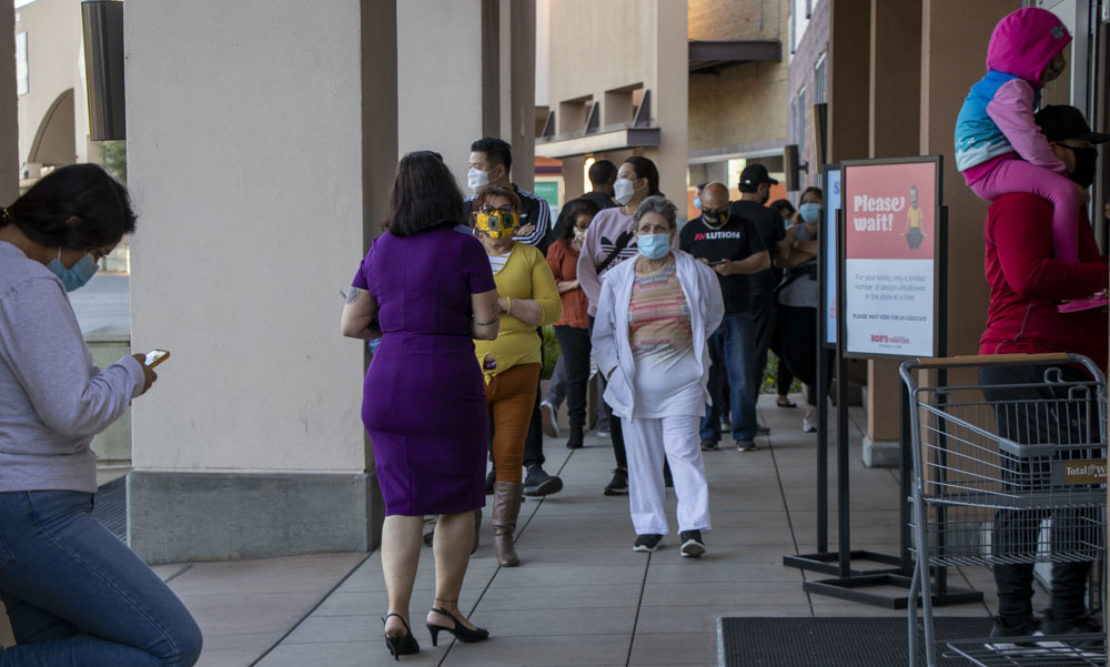
As a record number of cargo ships continue to linger in the San Pedro Bay, one thing is clear: The coronavirus pandemic has not tamped down consumer demand. And experts agree that high demand will continue through the holiday season, making for strong Black Friday sales.
While officials have, for months now, cautioned folks to start their holiday shopping early because of the supply chain bottleneck, Cal State Long Beach’s Economics Department Chair Seiji Steimetz said there are no signs demand will slow anytime soon.
“What’s causing all the shortage and backups we’re seeing is simply a massive surge in demand for goods,” Steimetz said. “We’re importing more into this country than we ever have before, and that’s due to an unprecedented increase in demand.”
In September, the most recent available data, national retail sales were up 22% compared to two years prior, Steimetz said, so “we’re well above pre-pandemic demand for goods.”
And there are several factors pointing to that trend continuing.
“Considering the strength of the economy, the overall surge in demand for goods, the extraordinary purchasing power of consumers (aided by coronavirus relief spending), and the ‘shop early’ messaging,” he said, “I wouldn’t be surprised if we have a record-setting Black Friday and holiday shopping season.”
While it’s clear that retailers will benefit from strong sales, what’s less apparent is whether those sales will translate to the long lines and frenzied malls of Black Fridays past— or if the sales will take place primarily online.
That’s because e-commerce has driven the recent surge in consumer demand, with online national retail sales in April of this year 57% higher than in April 2019, Steimetz said. Brick-and-mortar retail sales, meanwhile, have not seen similar gains.
“It’s hard to say” what stores will look like on Black Friday, Steimetz said. “You have two things working against each other: More purchasing power—the economy rebounded very quickly, and there’s a lot of purchasing power, especially when you consider, for example, stimulus spending. So there’s money out there, so that would increase the amount of people who might be lining up at the doors. But the thing is, there has been an increase in online shopping.”
But Zoe Engstrom, a consumer affairs lecturer at CSULB, said that after last year’s coronavirus-induced stay-at-home orders, shoppers are ready to take advantage of Black Friday deals in person.
“This year for Black Friday, there is expected to be big crowds,” she said. “It’s expected to be back because of the nostalgic factor in in-person shopping. Going out with family, having lunch, seeing Santa—all of that was denied to consumers last year, so that’s something that’s much more popular this year.”
Steimetz and Engstrom both agreed, though, that because of the supply chain bottleneck, the availability of specific items will be a concern.
Steimetz, for his part, said that while he believes the idea of stores with completely barren shelves “is a little bit alarmist,” shoppers may need to be more open-minded about what they buy depending on what’s in stock.
Engstrom pointed to the fact that cargo backlogs are largely impacting international shipping as evidence that consumers may be better served by seeking gifts made domestically.
Still, behemoths like Amazon, Costco and Walmart have had the resources to charter their own ships, which will likely mitigate some of the supply issues at larger retailers.
Supply of goods, though, isn’t the only aspect of the retail industry that’s been impacted by the pandemic. Stores are also struggling due to labor shortages. With that in mind, Engstrom had advice for shoppers this year: “There are staff shortages, so there may be a change in service level. So there is a lot of patience to be had.”
